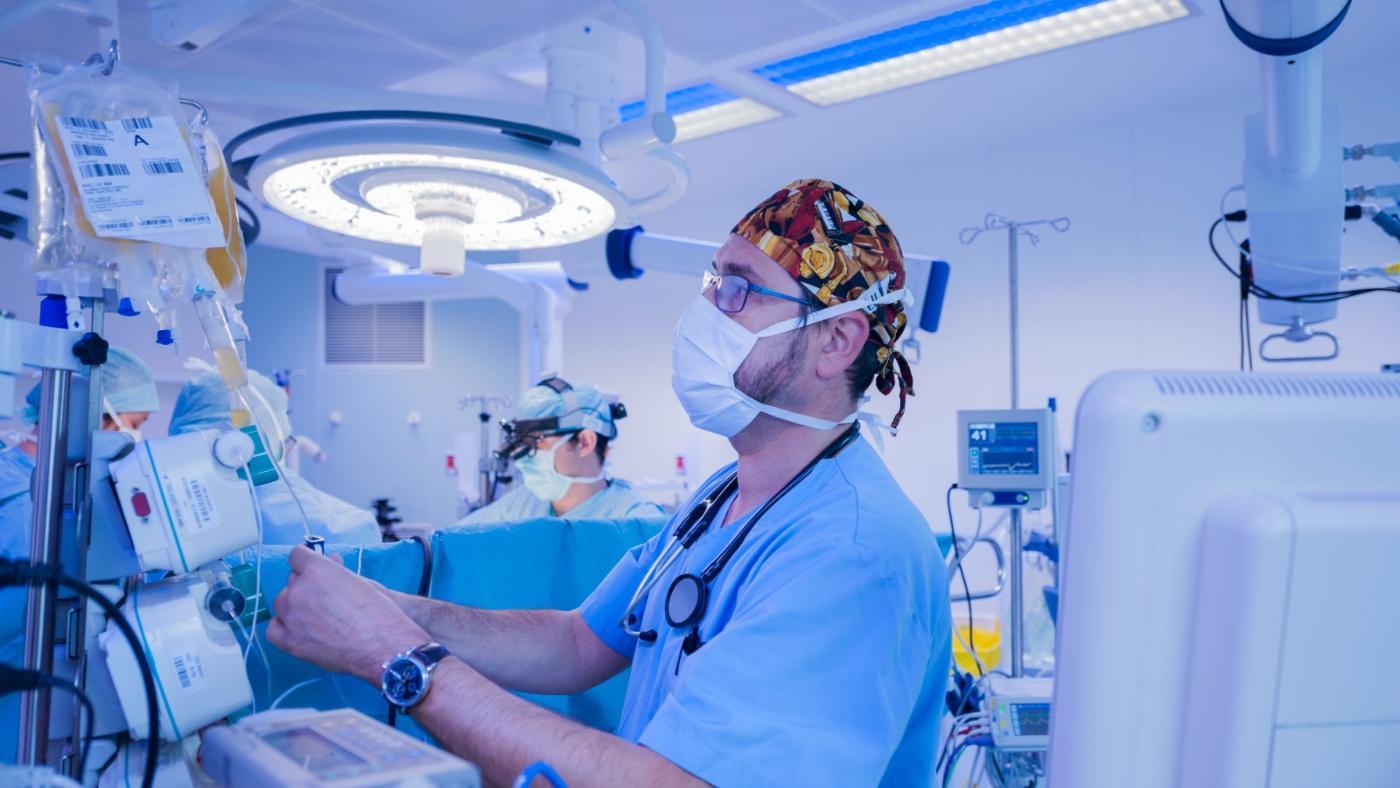Ever wondered what it truly takes to become a doctor who helps people stay comfortable and safe during operations? It’s a pretty important job, you know, making sure patients feel no pain and their bodies handle the stress of surgery. People often ask, "how many years of schooling for an anesthesiologist?" and the answer, honestly, involves a significant commitment of time and effort. It's a path that requires a good many years, a considerable quantity of dedication, as we often describe "many" when talking about a large, indefinite number of units or individuals.
This medical field is absolutely vital, and the training reflects that deep responsibility. You're not just learning about medications; you're actually mastering complex systems of the human body and how to keep them stable under extreme conditions. So, if you're curious about this career, perhaps considering it for yourself or someone you care about, it’s good to understand the full educational journey.
We're going to break down each stage, giving you a clear picture of the time involved and what you'll be doing during those years. It's a long process, to be honest, but for those who choose it, the reward of helping others through their most vulnerable moments is truly immense. This article aims to give you a full picture of the time commitment, from your first college class all the way to becoming a practicing specialist.
Table of Contents
- The Undergraduate Years: Building Your Foundation
- Medical School: The Core of Medical Learning
- Anesthesiology Residency: Specialized Training
- Fellowship Training: Optional but Valuable
- Licensing and Board Certification: The Final Steps
- Frequently Asked Questions About Anesthesiology Schooling
The Undergraduate Years: Building Your Foundation
The very first step on the path to becoming an anesthesiologist, you know, starts with a four-year college degree. Most aspiring doctors pick a science major, like biology, chemistry, or biochemistry. This helps them get a solid background in the subjects they’ll need for medical school. You'll be taking classes that are pretty challenging, like organic chemistry and physics, which really set the stage for later learning.
During these college years, it's not just about what you study in class. You also need to do other things that show you're serious about medicine. This means getting involved in activities outside of your coursework. For example, volunteering at a hospital or clinic is a really good idea; it gives you a firsthand look at how healthcare works. Research experience, perhaps in a lab on campus, can also make your application stronger, you know, showing your scientific curiosity.
Many students also spend time preparing for the Medical College Admission Test, or MCAT. This exam is a big hurdle, covering subjects like biological and physical sciences, as well as critical thinking. A good score on the MCAT is practically essential for getting into medical school, so students typically dedicate a good chunk of time to studying for it, sometimes for several months. So, by the end of these four years, you've got your degree, some real-world experience, and hopefully, a strong MCAT score ready for the next stage.
Medical School: The Core of Medical Learning
After college, the next big step is medical school, which typically lasts another four years. This is where you actually start to learn how to be a doctor. The first couple of years are usually spent in classrooms and labs, covering basic sciences like anatomy, physiology, and pharmacology. You'll be learning about how the human body works, and what happens when things go wrong, and how medications affect it. It's a lot of information, honestly, a truly immense quantity of facts and concepts to absorb.
The latter half of medical school, usually years three and four, shifts to clinical rotations. This is where you actually get to work in hospitals and clinics, seeing real patients under the guidance of experienced doctors. You'll rotate through different specialties, like surgery, internal medicine, pediatrics, and, of course, anesthesiology. These rotations are incredibly important, as they give you hands-on experience and help you figure out what kind of doctor you want to be. You're basically getting a taste of different medical fields, you know, seeing what fits.
During medical school, students also have to take a series of national exams called the United States Medical Licensing Examination (USMLE) Steps. These exams are really tough and test everything you’ve learned. Passing them is necessary to move forward in your training and eventually get a license to practice medicine. By the end of medical school, you’ve earned your Doctor of Medicine (MD) or Doctor of Osteopathic Medicine (DO) degree, and you're ready for specialized training.
Anesthesiology Residency: Specialized Training
Once medical school is done, the path continues with residency training. For anesthesiology, this is typically a four-year program. The first year, often called the intern year or PGY-1 (Postgraduate Year 1), is usually a broad clinical year. You might spend time in internal medicine, surgery, or other specialties, getting a general feel for patient care in different settings. This helps you build a strong foundation before focusing entirely on anesthesia. It's kind of like, you know, a warm-up year.
After the intern year, the next three years are dedicated specifically to anesthesiology training. This is where you really learn the ins and outs of providing anesthesia. You’ll spend time in operating rooms, intensive care units, and pain clinics. You'll learn how to manage a patient's breathing, heart rate, and blood pressure during surgery, and how to administer different types of anesthesia, like general, regional, and local. It's very hands-on, you know, with lots of direct patient care.
During residency, you'll also gain experience with different patient populations, from young children to older adults, and with a variety of surgical procedures. You'll learn how to handle emergencies and complex medical situations. This period is super intense, honestly, with long hours and a steep learning curve, but it’s absolutely essential for becoming a skilled anesthesiologist. You're basically practicing under close supervision, becoming more independent over time.
Fellowship Training: Optional but Valuable
After completing residency, some anesthesiologists choose to pursue even further specialized training through a fellowship. This is an optional step, but it's pretty common for those who want to focus on a particular area within anesthesiology. Fellowships usually last one or two years. For example, you might choose to specialize in pain management, critical care medicine, cardiac anesthesia, or pediatric anesthesia. It's a way to get even deeper knowledge in a specific niche, you know, becoming an expert in a very particular area.
A pain management fellowship, for instance, would focus on treating chronic pain conditions, using various techniques like nerve blocks and medication management. A critical care fellowship would prepare you to work in intensive care units, managing critically ill patients. These fellowships provide additional expertise and can open up more career opportunities, especially in academic settings or specialized practices. It's definitely a choice that adds to the overall time commitment, but it can be very rewarding.
While not every anesthesiologist completes a fellowship, many do, especially if they have a strong interest in a specific subspecialty. This extra training, you know, really refines your skills and knowledge, allowing you to tackle some of the most complex cases in your chosen field. It means adding a bit more time to your overall schooling, but it can make a big difference in your professional life and the types of patients you help.
Licensing and Board Certification: The Final Steps
After completing all the required schooling and residency, aspiring anesthesiologists must obtain a medical license to practice. This license is issued by the state medical board where they plan to work. The requirements vary slightly by state, but generally involve passing the USMLE exams, completing accredited medical school and residency programs, and sometimes, you know, a background check. This is the official permission to practice medicine on your own.
Beyond state licensing, most anesthesiologists also pursue board certification through the American Board of Anesthesiology (ABA). This is a voluntary process, but it’s widely recognized as a sign of excellence and expertise in the field. Board certification involves passing rigorous written and oral examinations. It shows that you've met the highest standards for knowledge and skill in anesthesiology. It's basically a way of saying, "I'm really good at this," you know, to your patients and colleagues.
Maintaining board certification requires ongoing education and periodic re-evaluation, ensuring that anesthesiologists stay current with the latest medical advancements and best practices. This continuous learning is a big part of the job, even after all the formal schooling is done. So, while the initial training path is long, the commitment to learning, you know, really never stops throughout an anesthesiologist's career. It’s a lifetime of staying updated to provide the best possible patient care.
Frequently Asked Questions About Anesthesiology Schooling
How hard is it to become an anesthesiologist?
Becoming an anesthesiologist is definitely challenging, to be honest. It requires a lot of dedication and hard work over many years. You'll face tough courses in college and medical school, competitive admissions, and a demanding residency. The amount of information you need to learn is vast, and the responsibility for patient safety is immense. But, you know, for those who are passionate about it, it's a very rewarding path.
What subjects do you need to study to be an anesthesiologist?
You'll need a strong foundation in science subjects, like biology, chemistry, and physics, during your undergraduate years. In medical school, you'll study all aspects of medicine, including anatomy, physiology, pharmacology, and clinical skills. During residency, the focus shifts entirely to anesthesiology, covering areas like patient monitoring, pain management, and critical care. So, it's a pretty broad range of topics, actually.
Do anesthesiologists go to medical school?
Yes, absolutely. Anesthesiologists are medical doctors. They complete a four-year undergraduate degree, then go through four years of medical school to earn their MD or DO degree. After that, they complete a four-year residency program specifically in anesthesiology. So, you know, it's a full medical training path, just like any other medical specialty. Learn more about medical careers on our site, and link to this page for more details.
For more general information on medical education and career paths, you might find resources from the Association of American Medical Colleges (AAMC) very helpful. They offer insights into the various stages of medical training, which can give you a broader perspective on what to expect.



